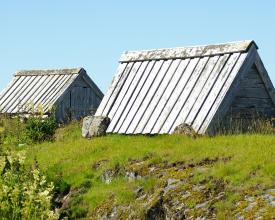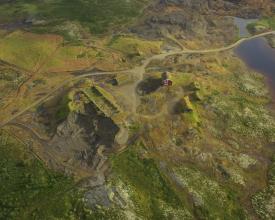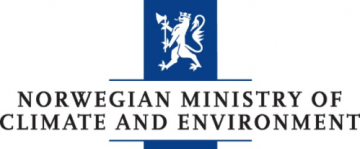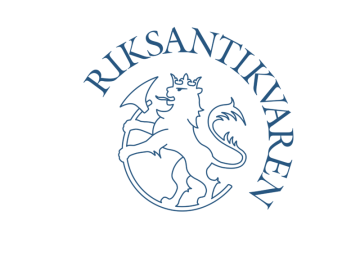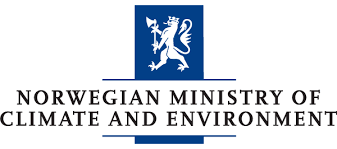
Patrimonio Mundial en Noruega: política nacional para una aplicación inclusiva y participativa de la Convención del Patrimonio Mundial
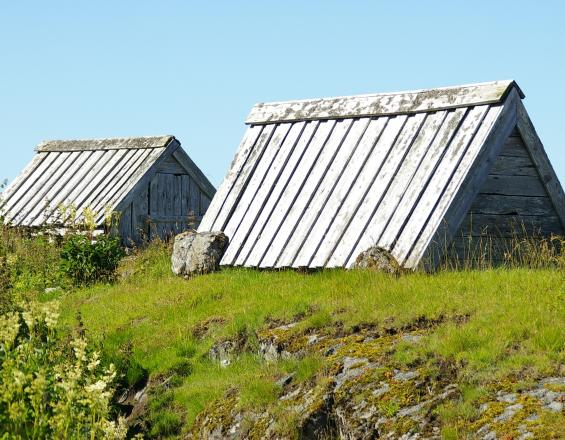
La solución se centra en la política nacional y en el sistema establecido en Noruega para aplicar la Convención del Patrimonio Mundial. Muestra la gran ambición de Noruega a la hora de aplicar la Convención y garantizar la mejor gestión y conservación posibles de los bienes del Patrimonio Mundial. La solución se refiere a la política establecida en detalle en el Informe al Storting (libro blanco) nº 35 (2012-2013) (Capítulo 4.8 Patrimonio Mundial) que continúa en el Informe al Storting (libro blanco) nº 16 (2019-2020), así como a la Ley de Patrimonio Cultural de 1978.
La solución aborda el mandato del Ministerio de Clima y Medio Ambiente, que es responsable tanto del patrimonio cultural como del natural, así como la creación de medios nacionales y locales para garantizar un mayor diálogo y comunicación entre las múltiples partes interesadas en el patrimonio mundial. Esto incluye un foro interministerial, consejos consultivos locales, la designación de coordinadores del Patrimonio Mundial y la puesta en marcha de actividades de capacitación.
Contexto
Défis à relever
- Retos medioambientales: Desarrollo sostenible de los bienes del Patrimonio Mundial.
- Retos culturales y sociales: La necesidad de reforzar la participación de las partes interesadas y las comunidades locales en la gestión y el proceso de toma de decisiones de los bienes del Patrimonio Mundial; La necesidad de diálogo con las comunidades locales y los agentes locales, garantizando la capacidad de gestión en los bienes del Patrimonio Mundial.
- Retos económicos: La necesidad de equilibrar las necesidades de desarrollo y la protección del Valor Universal Excepcional de los bienes del Patrimonio Mundial.
Ubicación
Procesar
Resumen del proceso
El marco político aborda la necesidad de coordinación entre varios ministerios y múltiples autoridades locales, regionales y nacionales, así como comunidades y partes interesadas locales. La interacción entre ministerios se ha facilitado mediante la creación de un Foro interministerial del Patrimonio Mundial (BB2), mientras que a nivel de los bienes se ha reforzado la gestión y se ha fomentado el diálogo entre las partes interesadas mediante la designación de coordinadores del Patrimonio Mundial (BB3) y de Consejos Consultivos del Patrimonio Mundial (BB4), que actúan como impulsores clave del diálogo y la sensibilización.
A través de su compromiso con el desarrollo de las capacidades del Patrimonio Mundial (BB5), Noruega es impulsora y donante del Programa de Liderazgo del Patrimonio Mundial.
Bloques de construcción
Política nacional: Informe al Storting (libro blanco) no. 35 (2012-2013) La política de patrimonio cultural
El capítulo 4.8 del Informe al Storting (libro blanco) no. 35 (2012-2013) - La Política de Patrimonio Cultural aborda específicamente el aspecto del Patrimonio Mundial y establece la política noruega sobre la gestión del Patrimonio Mundial en Noruega.
Los bienes del Patrimonio Mundial requieren protección para salvaguardar su Valor Universal Excepcional. La gestión de los bienes del Patrimonio Mundial incluye la participación de una serie de sectores y partes interesadas, incluidos varios ministerios, cada uno con responsabilidades sectoriales relativas al patrimonio cultural y natural, así como autoridades nacionales, regionales y locales. La política se ha creado como respuesta a una mayor atención prestada a la gestión de los bienes del Patrimonio Mundial, así como a la necesidad de aclarar las funciones y responsabilidades de las distintas partes interesadas y de permitir una mejor coordinación y colaboración entre los distintos sectores implicados en la gestión y conservación de los bienes del Patrimonio Mundial.
Factores facilitadores
Noruega fue uno de los primeros países en convertirse en Estado Parte de la Convención del Patrimonio Mundial tras ratificarla en 1977. La gran ambición de Noruega en la aplicación efectiva de la Convención del Patrimonio Mundial ha sido el motor clave para el desarrollo de una política centrada en la clarificación de funciones y responsabilidades en materia de gestión y conservación del Patrimonio Mundial.
Lección aprendida
La política aplicada a través del capítulo 4.8 del Informe al Storting (libro blanco) no. 35 (2012-2013) se considera un éxito, y las prioridades se han continuado en el nuevo libro blanco sobre patrimonio cultural presentado en 2020, Informe al Storting (libro blanco) nº 16 (2019-2020) Nye mål i kulturmiljøpolitikken. Engasjement, bærekraft og mangfold" ("Nuevos objetivos para la política de patrimonio cultural: compromiso, sostenibilidad y diversidad" (traducción no oficial)).
La adopción de esta política ha hecho que se preste más atención a las funciones y responsabilidades de las distintas partes interesadas en la gestión de los bienes del Patrimonio Mundial.
Foro Interministerial del Patrimonio Mundial
El Ministerio de Clima y Medio Ambiente es el ministerio responsable del seguimiento de la Convención del Patrimonio Mundial en Noruega. La Dirección Noruega de Patrimonio Cultural y la Agencia Noruega de Medio Ambiente son responsables de la aplicación nacional de la convención. Otros ministerios tienen responsabilidades sectoriales en materia de patrimonio cultural y natural. Para que la convención se aplique y coordine eficazmente, Noruega ha creado un foro interministerial del patrimonio mundial que el Ministerio de Clima y Medio Ambiente organiza en reuniones bianuales. El objetivo del foro es sensibilizar a los ministerios sobre las obligaciones derivadas de la Convención del Patrimonio Mundial, para que las distintas autoridades se coordinen mejor en la gestión de los bienes del Patrimonio Mundial.
Factores facilitadores
El foro está previsto en el marco del Informe al Storting (libro blanco) no. 35 (2012-2013) La Política de Patrimonio Cultural (Capítulo 4.8 Patrimonio Mundial) y el Informe al Storting (libro blanco) nº 16 (2019-2020).
Lección aprendida
El Foro Interministerial del Patrimonio Mundial es una plataforma eficaz para el diálogo entre las partes interesadas institucionales nacionales y para concienciar sobre las obligaciones de las partes interesadas / convención.
Coordinadores de Patrimonio Mundial
Para garantizar el diálogo con las comunidades locales y las partes interesadas, así como su participación en los procesos del Patrimonio Mundial, la política noruega prevé la designación de un coordinador del Patrimonio Mundial en cada bien del Patrimonio Mundial. La función del coordinador es coordinar el diálogo y el flujo de información entre las instituciones nacionales y los gobiernos locales, las comunidades y las partes interesadas. Se ha establecido una reunión anual entre los coordinadores del patrimonio mundial, el Ministerio de Clima y Medio Ambiente y las direcciones con el fin de facilitar este diálogo. En los ocho bienes del patrimonio mundial de Noruega hay un coordinador del patrimonio mundial.
Los coordinadores del Patrimonio Mundial colaboran con las partes interesadas locales en la mejora de las capacidades locales mediante campañas de sensibilización y divulgación destinadas a comunicar los Valores Universales Excepcionales y otros valores de los bienes y a mejorar la comprensión local de lo que es el Patrimonio Mundial y cuáles son sus requisitos, teniendo también en cuenta la importancia de equilibrar las necesidades de desarrollo y conservación.
Factores facilitadores
Los Coordinadores del Patrimonio Mundial se establecen en el marco del Informe al Storting (libro blanco) no. 35 (2012-2013) La Política de Patrimonio Cultural (Capítulo 4.8 Patrimonio Mundial) y el Informe al Storting (libro blanco) nº 16 (2019-2020).
Lección aprendida
- Los coordinadores del Patrimonio Mundial desempeñan un papel importante a la hora de garantizar la aplicación efectiva de la Convención del Patrimonio Mundial en los bienes inscritos. Esta tarea exige estar al día de los cambios en el mecanismo y los conocimientos aplicados a la aplicación de la convención (incluidos los cambios en las Directrices Prácticas) y, por esta razón, ha resultado importante garantizar que los coordinadores del Patrimonio Mundial tengan acceso a conocimientos e información actualizada, así como poder participar en actividades de creación de capacidades (por ejemplo, cursos de formación o foros de administradores de sitios).
- La labor de un coordinador del Patrimonio Mundial es eficaz cuando las comunidades locales y las partes interesadas participan y son conscientes de la importancia y el valor de los bienes del Patrimonio Mundial. La función del coordinador es reforzar la comprensión local de los bienes y la participación local en los procesos del Patrimonio Mundial.
- El establecimiento de la reunión anual de coordinadores del Patrimonio Mundial ha sido esencial para asegurar el flujo de información desde el ámbito nacional y para asegurar el flujo de información entre coordinadores.
Juntas consultivas en cada bien del Patrimonio Mundial
La propiedad local, la responsabilidad local y la participación local son herramientas para la mejor gestión posible de los bienes del Patrimonio Mundial. Con vistas a reforzar la apropiación, la responsabilidad y la implicación locales, se han creado juntas consultivas locales del Patrimonio Mundial en cada bien. Estos consejos incluyen miembros de diferentes grupos de interesados y autoridades. El coordinador del Patrimonio Mundial participa en el consejo consultivo del Patrimonio Mundial. El consejo debatirá cuestiones relevantes para la gestión del bien del Patrimonio Mundial en cuestión, garantizando que la toma de decisiones a nivel local no comprometa, sino que apoye, los valores del Patrimonio Mundial del bien.
Factores facilitadores
Los Consejos Consultivos del Patrimonio Mundial se desarrollan y establecen en el marco del Informe al Storting (libro blanco) no. 35 (2012-2013) La Política de Patrimonio Cultural (Capítulo 4.8 Patrimonio Mundial) y el Informe al Storting (libro blanco) nº 16 (2019-2020).
Lección aprendida
- Las juntas consultivas del Patrimonio Mundial son herramientas importantes para la participación local en los bienes del Patrimonio Mundial. La junta consultiva es un elemento clave para coordinar el trabajo de múltiples partes interesadas en un bien.
- La creación de consejos consultivos del Patrimonio Mundial ha sido importante para concienciar sobre las obligaciones en la gestión de los bienes del Patrimonio Mundial.
Iniciativas de refuerzo de las capacidades en materia de Patrimonio Mundial
Noruega se ha comprometido a trabajar en pro de la aplicación plena y efectiva de la Convención del Patrimonio Mundial tanto a nivel nacional como internacional. A nivel nacional, el Ministerio de Clima y Medio Ambiente, junto con la Dirección Noruega de Patrimonio Cultural y la Agencia Noruega de Medio Ambiente, organiza reuniones anuales con los coordinadores del Patrimonio Mundial, con el objetivo de crear un diálogo y difundir la información necesaria para un desarrollo positivo de los bienes del Patrimonio Mundial.
A escala internacional, Noruega es uno de los impulsores y donantes del Programa de Liderazgo del Patrimonio Mundial del ICCROM y la UICN, que es un programa mundial de desarrollo de capacidades sobre la gestión de la naturaleza y la cultura en los bienes del Patrimonio Mundial. Las partes interesadas noruegas pueden participar en las actividades del Programa de Liderazgo del Patrimonio Mundial y varias actividades del programa se celebran en Noruega.
Factores facilitadores
El desarrollo de capacidades en relación con el Patrimonio Mundial se incluye en el Informe al Storting (libro blanco) nº 35 (2012-2013) Política de Patrimonio Cultural (Capítulo 4.8 Patrimonio Mundial) y en el Informe al Storting (libro blanco) nº 16 (2019-2020). En el marco del Programa de Liderazgo del Patrimonio Mundial, la planificación y ejecución de las actividades de desarrollo de capacidades corre a cargo de los organismos consultivos (ICCROM, UICN, ICOMOS) en cooperación con el Ministerio de Clima y Medio Ambiente. También participan otros socios internacionales, como el Centro del Patrimonio Mundial de la UNESCO.
Lección aprendida
- La creación de capacidades es un elemento clave para la planificación y aplicación de la Convención del Patrimonio Mundial y es también uno de sus cinco objetivos estratégicos. La creación de capacidades está en el centro de una gestión y conservación eficaces de los bienes del Patrimonio Mundial.
- Es importante que los representantes de los bienes noruegos del Patrimonio Mundial participen en la cooperación internacional, contribuyendo así a elevar la competencia y la capacidad del bien local del Patrimonio Mundial en su propio tipo de Patrimonio Mundial.
- El desarrollo de capacidades está profundamente arraigado en el intercambio de experiencias y en el aprendizaje mutuo.
Impactos
Entre los impactos logrados destaca la experiencia de Noruega en la incorporación de los principios de la Convención del Patrimonio Mundial a la política nacional, lo que refleja la importancia de la interrelación entre naturaleza y cultura en la gestión y conservación de los bienes patrimoniales. Además, la solución aborda los siguientes impactos
- Ambiental: La comprensión noruega de la interconexión entre naturaleza y cultura comienza con la inclusión del patrimonio cultural como parte de la solución ambiental. Esto se refleja en la estructura institucional, que atribuye la responsabilidad de la política de patrimonio cultural al Ministerio de Clima y Medio Ambiente. La gestión del patrimonio cultural y natural es seguida por dos direcciones: La Dirección Noruega de Patrimonio Cultural y la Agencia Noruega de Medio Ambiente.
- Cultural y social: Las comunidades y los agentes locales son partes interesadas clave a la hora de incluir las perspectivas locales y crear capacidades para la gestión eficaz e integradora de los bienes del Patrimonio Mundial.
- Económicos: Noruega reconoce el papel que el Patrimonio Mundial puede desempeñar en el desarrollo socioeconómico sostenible de las comunidades locales.
Beneficiarios
Los principales beneficiarios de esta solución son las comunidades, los municipios locales, los agentes institucionales y las partes interesadas que participan en la gestión y conservación de los bienes del Patrimonio Mundial en Noruega.
